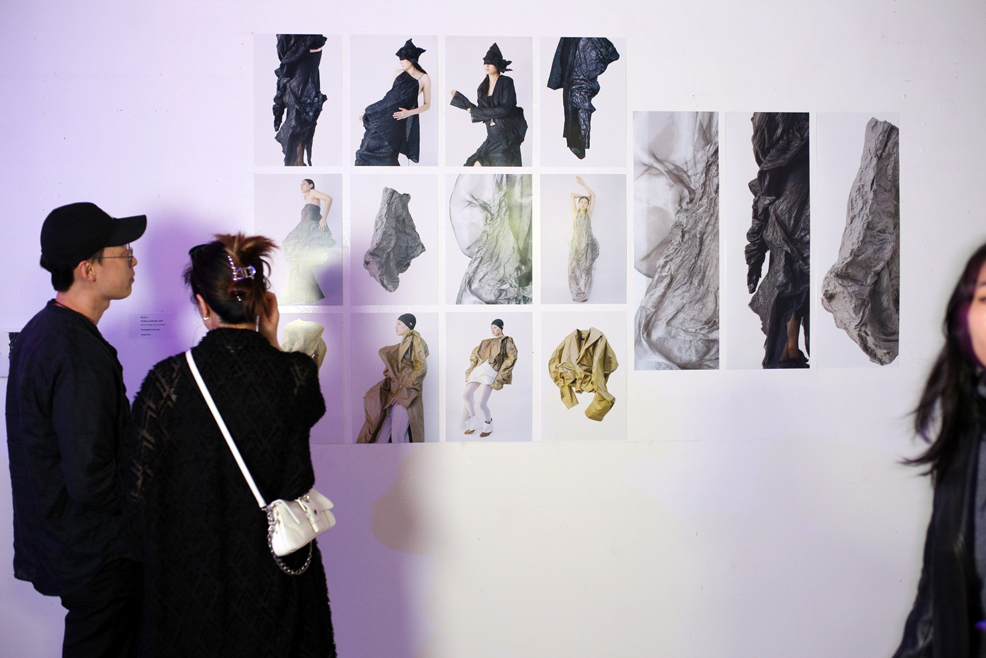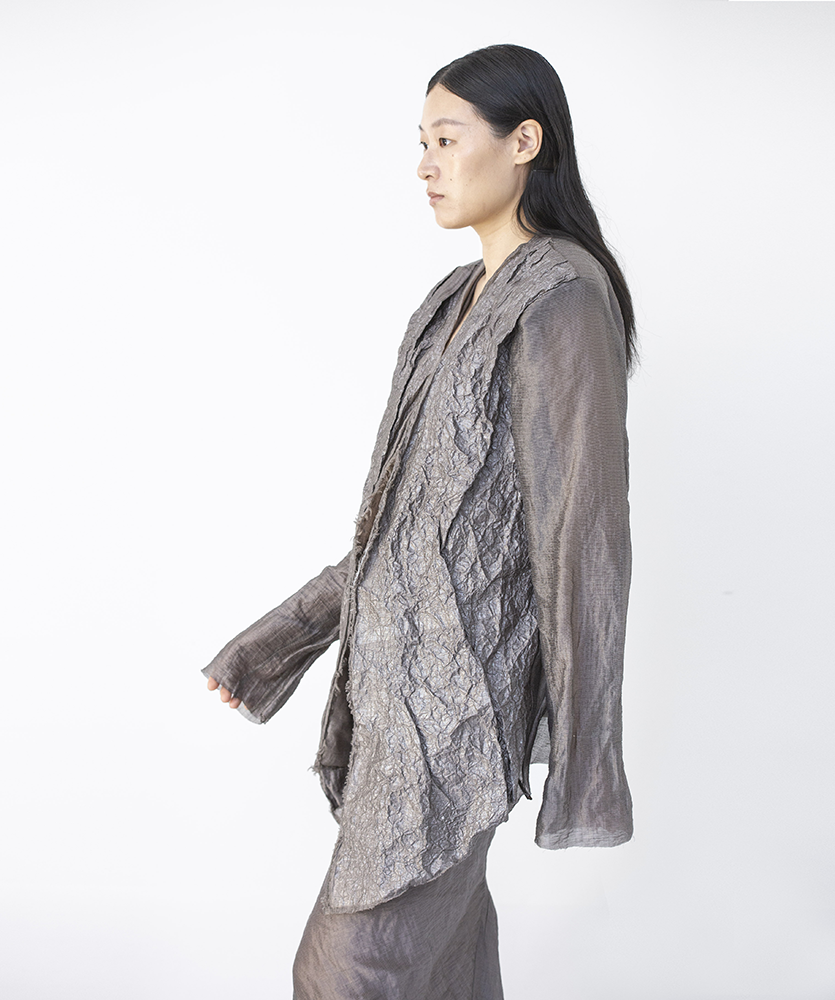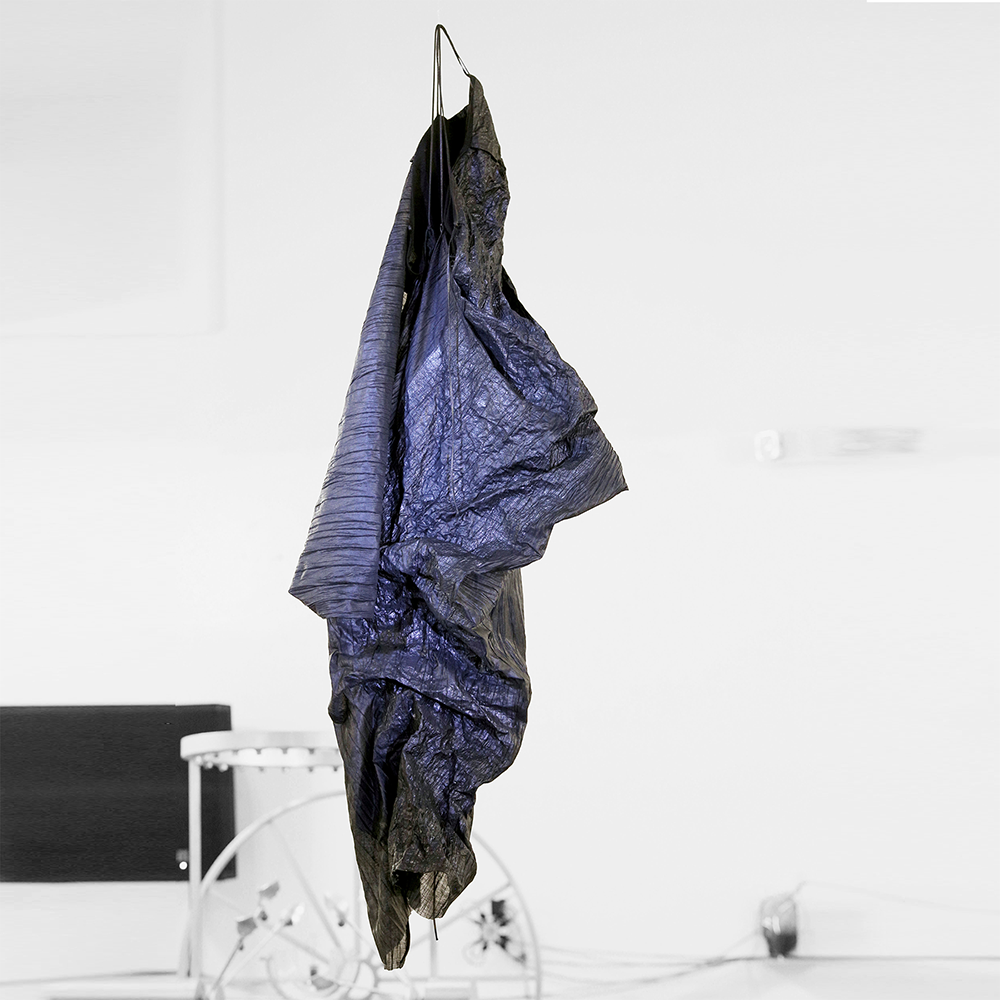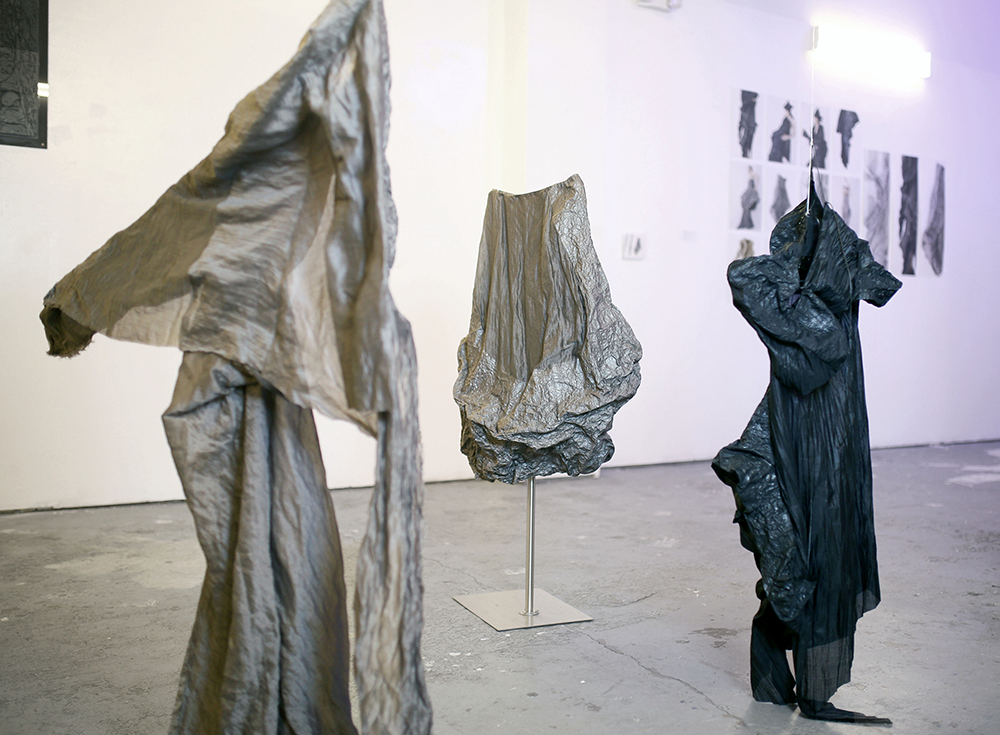Bonan Li is a New York-based Chinese fashion designer whose work elves into the connections between human consciousness, the body, and nature’s energy. Her designs blend abstraction, texture fluidity, and sculptural forms to invite introspective engagement through dynamic, immersive spaces.
Born: China
Now: New York
@bo_nan_li | bonanli.com
INTERVIEW
Your work bridges nature, human consciousness, and fashion. How do you approach designing pieces that reflect these deep connections?
I approach designing by immersing myself in the essence of nature and the human experience. I view clothing as more than just garments; they’re contemplative spaces where wearers can connect with their inner selves and the natural world. My process often begins with exploring the transient beauty in nature, like the decay of leaves or the patterns in landscapes, and translating those observations into textures, forms, and silhouettes that evoke a primal, sensory response. By abstracting the body and using gender-fluid elements, I aim to dissolve boundaries and invite people to experience a deeper connection with themselves and the environment through each piece.

Sustainability is a core value in your design philosophy. Could you share some specific low-waste techniques or materials you use to reduce environmental impact?
Sustainability is central to my design approach, and I’m committed to using low-waste techniques and materials that minimize environmental impact. For instance, I focus on fabric manipulation methods like shrink pleating, which allows me to use minimal cuts and produce less waste.I also experiment with zero-waste cut techniques, carefully planning each pattern to ensure minimal fabric waste while maintaining a seamless design. This approach allows me to use every part of the material, creating thoughtful pieces that are both sustainable and versatile. Additionally, I prioritize sourcing recycled and organic fabrics, as well as using discarded textiles for creating accessories. These methods enable me to create versatile, thoughtful pieces that align with my goal of reducing waste while maintaining high-quality craftsmanship.

Eastern aesthetics and philosophy strongly influence your work. How do you incorporate these principles into your design process?
Eastern aesthetics and philosophy profoundly shape my approach, especially the concept of “jian”, which emphasizes simplicity, restraint, and harmony with nature. I incorporate these principles by designing with organic forms, subtle details, and a mindful use of space, allowing each piece to breathe and resonate with a sense of imperfection and transience. I embrace raw textures and natural dyes that reflect the evolving beauty of landscapes, seeking to capture the essence of nature’s unique elegance. This perspective fosters a meditative approach to fashion, where each garment invites introspection and connection, embodying an understated, timeless beauty aligned with Eastern thought.

In your recent conceptual project, you reimagined clothing in a post-pandemic context, even exploring virtual-reality influences. How has the pandemic reshaped your approach to fashion?
The pandemic has profoundly reshaped my approach to fashion, prompting me to reconsider the purpose and experience of clothing in a world where physical presence is no longer always guaranteed. It encouraged me to focus more on adaptability and emotional resonance, designing pieces that offer a sense of comfort and personal space in times of uncertainty. Additionally, I’ve begun to explore virtual-reality elements, seeing digital spaces as new arenas for self-expression and creativity. This shift allows me to blend tangible and digital worlds, crafting garments that not only function as physical attire but also as immersive, contemplative experiences in virtual settings. This approach has broadened my understanding of fashion as a fluid, evolving form of connection, regardless of physical boundaries.

You’ve been recognized with the Top Ten Fashion Designers Award and the MUSE Design Award. How have these honors impacted your career and vision as a designer?
Receiving the Top Ten Fashion Designers Award and the MUSE Design Award has been incredibly affirming for me as a designer. These honors have not only brought visibility to my work but also validated my commitment to pushing boundaries and exploring unconventional concepts in fashion. They’ve inspired me to dive even deeper into my vision, blending elements of art, philosophy, and sustainability. The recognition has also encouraged me to remain true to my values and experiment boldly, knowing there’s an audience that resonates with my approach. Overall, these accolades have strengthened my dedication to creating meaningful, introspective designs that challenge norms and foster connections on a deeper level.

Your exhibition Floating Landscape explores the interaction between the body and space. What inspired this concept, and what do you hope audiences take away from it?
Floating Landscape was inspired by my fascination with the delicate relationship between the body, nature, and the spaces we inhabit. Reflecting on memories of observing the decay and regeneration in natural landscapes, such as the slow transformation of lotus leaves, I became captivated by themes of transience and the quiet beauty in life’s cycles. Through this exhibition, I aim to evoke a sense of stillness and introspection, inviting audiences to explore the subtle interactions between body and environment. I hope they feel a primal connection with nature and are reminded of the beauty in impermanence—seeing clothing as more than just fabric but as a bridge to their inner worlds and the larger, shifting landscape around them.

What advice would you give to emerging fashion designers who want to incorporate cultural identity and sustainability into their work?
For emerging designers wanting to integrate cultural identity and sustainability, I’d say start by deeply exploring and embracing your own heritage and values.
Cultural identity isn’t something to simply add on; it’s an evolving part of who you are that will naturally shape your designs when approached authentically.
Take time to understand the symbols, materials, or techniques that resonate with your background and find ways to reinterpret them in fresh, contemporary ways.
For sustainability, remember that it’s a commitment to mindful choices rather than a one-time feature. Experiment with low-waste techniques, source ethically made or recycled materials, and think about the longevity and versatility of each piece. Balancing these elements requires patience, so allow yourself to grow and learn as you create. Ultimately, the goal is to produce work that feels meaningful and lasting, both culturally and environmentally.